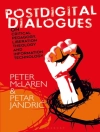‘[Gangs in America′s Communities] is one of the most comprehensive treatments of gangs in the marketplace. . . . I highly recommend its adoption as you will not be disappointed and, most importantly, neither will your students.’
—Elvira White-Lewis, Texas A&M University-Commerce
Gangs in America′s Communities, Third Edition blends theory with current research to help readers identify essential features associated with youth violence and gangs, as well as apply strategies for gang control and prevention. Authors Dr. James C. Howell and Dr. Elizabeth Griffiths introduce readers to theories of gang formation, illustrate various ways of defining and classifying gangs, and discuss national trends in gang presence and gang-related violence across American cities. They also offer evidence-based strategies for positioning communities to prevent, intervene, and address gang activity.
New to the Third Edition:
- A series of new case studies document the evolution of numerous gangs in large cities, including the community aspect, evolutionary nature, and how cities influence levels of violence.
- New discussions highlighting the role of social media, insights into how gangs use it to recruit members, and the response from law enforcement.
- Current nationwide gang trends are discussed to encourage readers to analyze and interpret the most recent statistics for which representative data is available.
- Updated macro and micro gang theories enable readers to explore a recent encapsulation of leading developmental models.
- New discussions around female gang members offer readers potentially effective programs for discouraging females from joining gangs—along with highly regarded delinquency prevention and reduction programs that have the potency to be effective in reducing gang crimes among young women.
- A comprehensive gang prevention, intervention, and suppression program in Multnomah County, Oregon shows how theory was successfully applied to reduce gang activity in a local community.
- New research on ‘gang structures’ and their rates of crime illustrate the connections between violent crimes and the amount of violent offenders within a gang.
- Additional discussion of distinguishing features (e.g., typologies) of major gangs, and numerous examples of gang symbols, tattoos, and graffiti has been added to help readers identify and differentiate various types of gangs.
विषयसूची
Preface
Acknowledgments
About the authors
Chapter 1: History of Gangs in the United States
Street Gang Emergence in the Northeast
Street Gang Emergence in the Midwest
Street Gang Emergence in the West Region
Street Gang Emergence in the South
Another Wave of Immigrant Groups
The Institutionalization of Street Gangs
Chapter 2: Myths and Realities of Youth Gangs
Consideration of Key Myths About Gangs
Chapter 3: Defining Gangs and Gang Members
Defining Gangs
Typologies of Gang Members and Gang Structures
Gang Subculture
Gang Graffiti
A European Gang Definition
A Recommended Gang Definition for Practical Purposes
Defining Gang Members
Demographic Characteristics of U.S. Gangs and Gang Members
Chapter 4: General Macro-Level Theories and Modern-Day Applications
The Chicago School and Development of the Social Disorganization Perspective
Application of Social Disorganization Theory to Gangs
A General Explanation of Gang Origins, Expansion, and Violence
Other Macro-Level Theories
Chapter 5: Micro-Level Theories: Developmental Life-Course Pathways and Other Micro-Level Explanations for Gang Involvement
Location of Gang Membership in Developmental Pathways
Developmental Theories
An Illustration of the Life-Course Model of Gang Involvement
A Broad Developmental Gang Theory
The Gang Joining Process
“The Digital Street”: Gangs on Social Media
Apex of Gang Member Criminal Activity
Long-Term Impact of Gang Membership on Participants
Desistance From Gang Membership
Other Micro-Level Gang Theories
Chapter 6: Girls and Gangs
Females in Early Gang Studies
Modern-Day Studies of Female Gang Members
Level of Female Gang Involvement and Seriousness of Crimes
The Question of Increasing Female Gang Involvement
The Importance of Gang Gender Composition
Female Associates of Gang Members: Risks and Re Victimization
Girls’ Unique Treatment Needs and Implications for Prevention and Treatment
Chapter 7: National Gang Problem Trends: 1996 to 2012
An Overview of Nationwide Gang Activity in the Modern Era
Nationally Reported Youth Gang Activity From the Mid-1990s
Patterns in U.S. Localities’ Histories of Gang Activity
Patterns of Gang Presence in Larger Cities
Modal Cities
Regional Variations in Gang Presence
Explaining the Emergence, Persistence, and Decline of Gang Activity
Chapter 8: Urban Gangs and Violence
The Intensity of Gangs in Cities
Serious Gang Problem Trends
A National Perspective of Gang Structures
Key Structural Features of Violent Gangs Nationwide
A Social Network Approach to Gang Cohesion
Gunshot Injury Risk Associated with Social Networks
Case Studies of Gang Problems in Large Cities
Contextual Characteristics That Contribute to Serious Gang Problems
Chapter 9: What Works: Prevention
Risk-Focused, Data-Driven, and Research-Based Gang Prevention
A Framework for Prevention and Early Intervention
Building a Continuum of Effective Delinquency Prevention and Early-Intervention Programs
Chapter 10: What Works: Intervention and Suppression
Evidence-Based Gang Programs
Promising Gang Programs
The Utility of Gang Intelligence Databases
The Comprehensive, Community-Wide Gang Program Model
The Evidence-Based Comprehensive Gang Program Model
Project Safe Neighborhoods
Glossary
References
Index
लेखक के बारे में
Dr. Elizabeth Griffiths is an Associate Professor in the School of Criminal Justice at Rutgers University-Newark. After completing her Ph.D. in Sociology at the University of Toronto, she joined the faculty of the Department of Sociology at Emory University before moving to Rutgers in 2011. She is also a former predoctoral fellow of the National Consortium on Violence Research and a former Junior Fellow of the Centre of Criminology at the University of Toronto. Her research spans multiple substantive and methodological areas, including communities and crime, spatial diffusion of violence, temporal trends in homicide, the emergence of gangs in places, the transformation of public housing, youth crime and the code of the street, the efficacy of drug-free zones, and victimization risk, among others.












